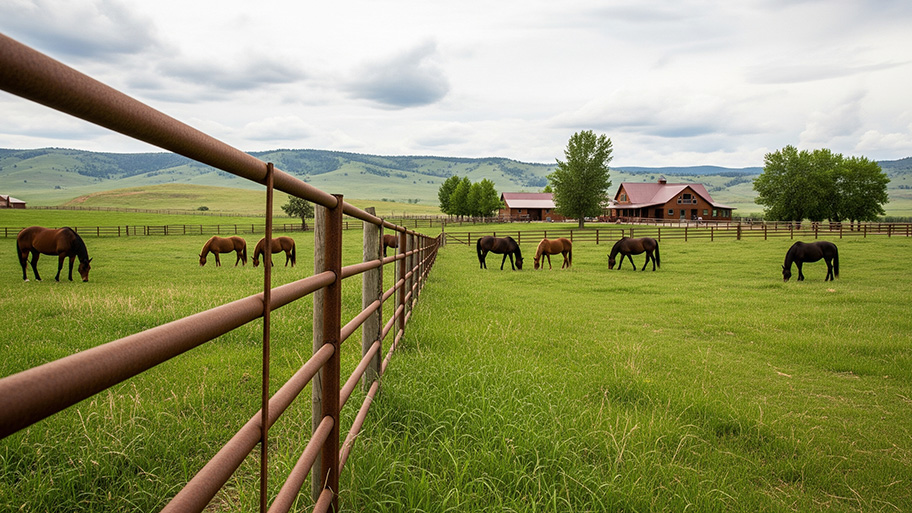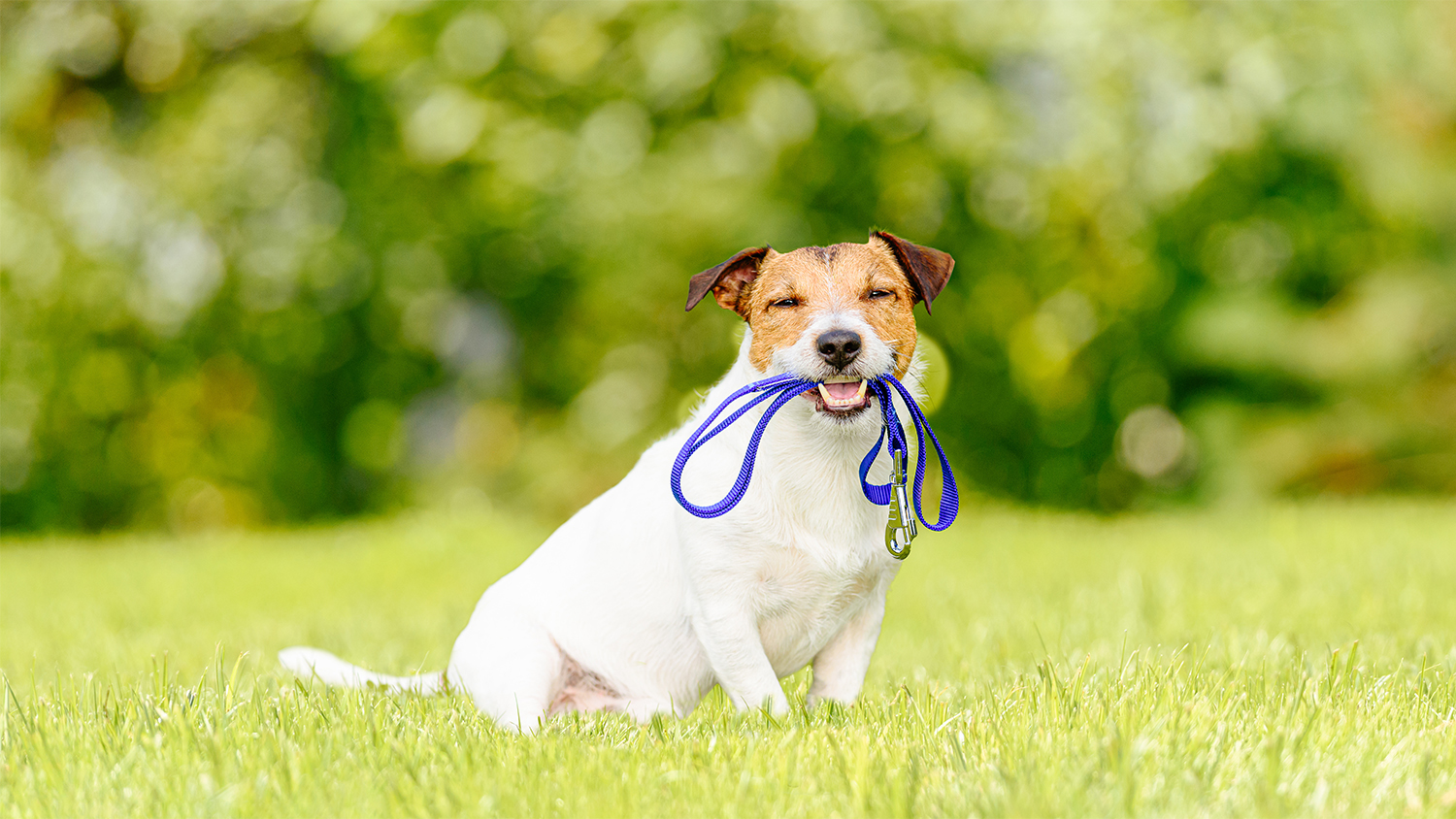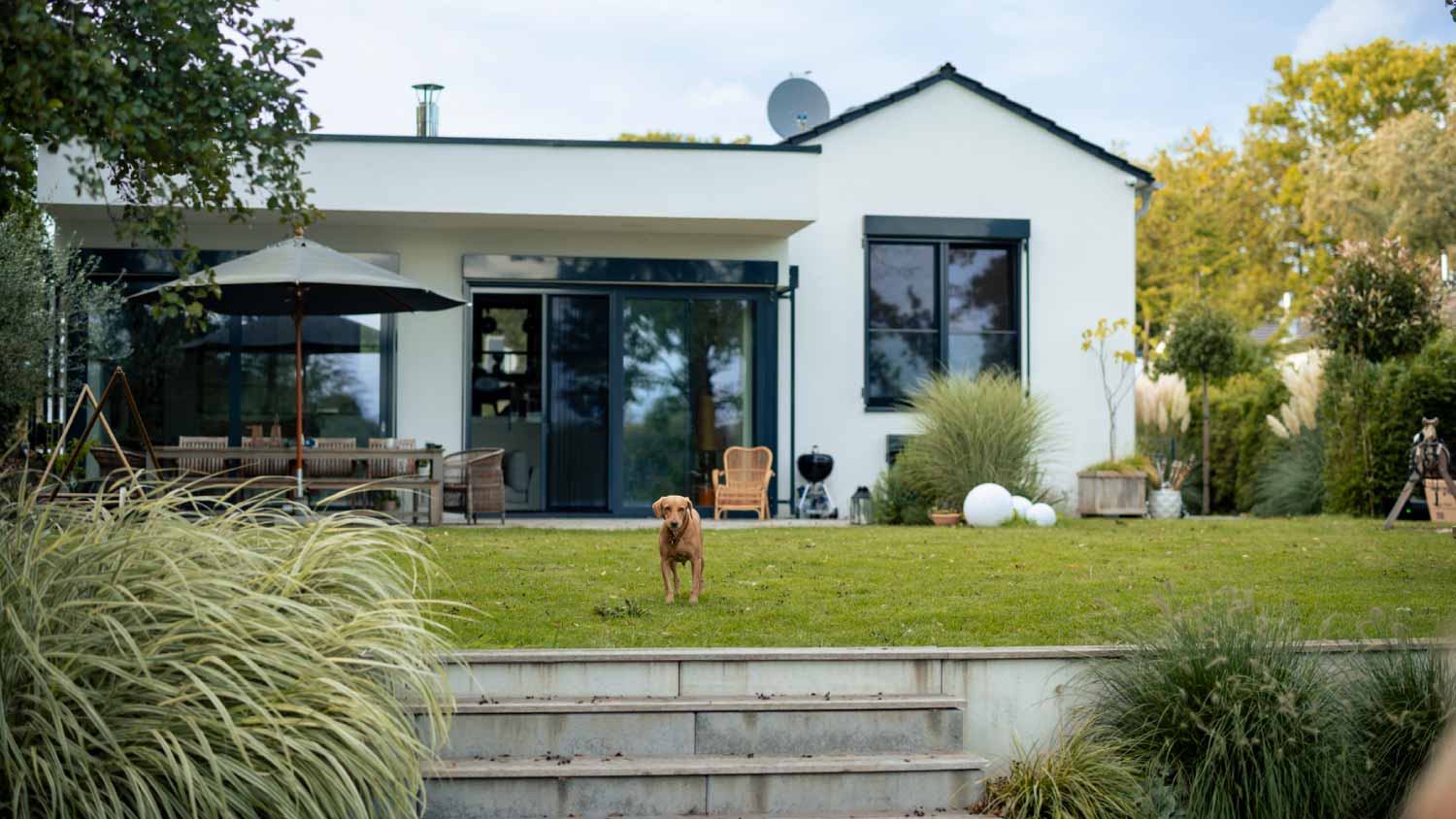
Pipe fencing is an extremely strong, durable option for containing horses and other livestock. This guide breaks down the factors that affect pipe fence cost.
Animal fencing service costs depend on your project and location. Check with a local pro for your specific job.
Dog fence installation costs about $4,700, with the total price based mostly on fence length.
Chain link and wood dog fences are more affordable and cost $1,500 to $4,500.
Vinyl or aluminum dog fences can cost up to $6,000 for an average-sized yard.
Gates add $150 to $500 each to your total—more for custom or large models.
Invisible dog fences cost around $1,325, including materials and installation.
Your furry companions are family. So, of course, protecting your pup from the dangers of roaming or running away is a good idea. The cost to install a dog fence ranges from $2,000 and $8,000 with $4,700 as the average. Exactly how much you will pay depends on the type of fence you choose, the size of your yard, and your location. Let's dig into the details.
Many factors impact the cost of installing a dog fence. Consider your specific needs and budget when planning a dog fence installation. Here are the top considerations to keep in mind when thinking about out-of-pocket costs.
When selecting a dog fence for your property, you'll encounter a range of options, but they often fall into two primary categories: traditional and invisible.
A traditional fence is installed above the ground and is visible to all. These fences can be made from various materials, such as wood, chain-link, vinyl, or aluminum. Underground dog fencing, also known as invisible fencing, uses a boundary wire set in the ground around the perimeter of whatever area you wish to fence. This project requires a local professional invisible fence installer to dig a trench and install the wire. A transmitter wirelessly connects to the collar around your dog’s neck—if your dog leaves the boundary area, an electric pulse shocks the dog.
Some people believe invisible fences aren’t safe for dogs. If you want to consider an invisible fence, you should talk to your veterinarian about your specific pup. Additionally, some states and counties may not allow this type of fencing to be installed, so always check local ordinances.
Amelia Weiber, PDT-KA, CCBC, fear-free certified trainer, who runs Caring Behavior Animal Behavior Consulting and sits on the advisory board for Daily Paws, cautions that “electric fences can result in behavioral side effects and may not be able to keep a dog safely in the yard so they should be avoided as a containment option.”
Even dog owners who opt for an invisible fence must take the time to teach their pups not to cross the barrier and avoid getting shocked. Positive reinforcement like treats, praise, and attention can help with this training.
Factors that could impact your out-of-pocket cost for a taller or longer fence are related to stability, materials, and labor.
Taller fences may require thicker posts set in a deeper installation depth or concrete footings and bracing. Longer fences will require more materials and labor. With the average cost for labor hovering around $50 and additional materials such as concrete ranging from $8 to $10 per 80-pound bag, expenses can add up quickly.
The average expenses for fence installation based on various lot sizes range from $10,200 for a 1/4 acre lot to $19,500 for a full acre. Larger properties spanning 2 acres should anticipate $30,000 as a potential cost to install a dog fence.
Uneven or rocky terrain may require additional labor, equipment, and materials.
The expenses associated with land clearing and leveling can vary significantly. Clearing an acre of land can cost anywhere from $20,000 to $100,000, while clearing smaller areas, such as the size of a residential pool, is around $1,000.
If you choose to DIY, you can expect to spend $1 to $15 per linear foot. On the other hand, if you opt for professional installation services, the range falls between $10 and $32.50 per linear foot, not including materials.
Your out-of-pocket costs for decorative elements and gates depend on your location and if you decide to DIY. Gates can be purchased at most home improvement stores for a few hundred dollars.
If you installed an invisible or electric fence, your dog may need dog training. Some invisible fence installers will offer training as an added service. The average cost of dog training is $50 per hour.
Fence installation costs will vary based on your location. Labor prices, material access, and the shape of the land all affect the price. Urban areas often cost more, while rural spots may be cheaper thanks to lower labor costs. Knowing these factors helps you plan better.
| State | Average Dog Fence Cost |
|---|---|
| California | $3,000–$9,000 |
| New York | $3,500–$9,500 |
| Texas | $2,500–$7,000 |
| Florida | $2,800–$7,500 |
| Idaho | $2,000–$6,500 |
| Oklahoma | $2,500–$7,000 |
| Colorado | $3,000–$8,500 |
| Indiana | $2,500–$7,200 |
| Kentucky | $2,500–$7,000 |
| Montana | $2,000–$6,800 |
The average cost to install a fence is around $4,700, or $15 and $45 per linear foot. The price depends on the length of the fence and the material used. Vinyl and aluminum will set you back the most but have added benefits like extra privacy, durability, and security. Wood fences fall in the mid-price range and can be eye-pleasing, but they have some extra maintenance requirements.
Here are examples of various fencing material costs based on 150 linear feet:
| Material | Average Cost Range |
|---|---|
| Wood | $1,000–$4,500 |
| Vinyl | $3,000–$6,000 |
| Chain link | $1,500–$4,000 |
| Corrugated metal | $1,600–$5,200 |
| Aluminum | $4,500 – $6,000 |
The average invisible fence cost is around $1,325, or $2.50 per linear foot, depending on the type you buy. This price includes the collar, charger, voltage, meter, and batteries.
Installing a traditional fence can be a big job—you’ll need to dig post holes, level pickets, and install gates. Installing an invisible fence requires even more specific skills, like trenching the fence line, burying wiring, and installing a transmitter. Unless you have fence installation experience, it’s best to hire a local pet fence installation pro.
Hiring a fence installation pro can save you time and labor—here’s why:
Pros have the equipment to efficiently dig holes and install posts.
A pro will know all applicable codes and regulations that your fence needs to comply with.
Pros have experience navigating the permit process.
Invisible fence installation pros know all the steps to install the different parts of the system and can do it quickly and properly.
Pros know to take care while digging to avoid utility lines and other hazards.
A fence installation pro can prepare the land so the fence is installed correctly and lasts for years to come.
Invisible fence installation should be left to the pros, but there are some tasks you can take on to help with installing a traditional or invisible fence:
Prepare the fence line by clearing obstacles
Find and mark underground wiring and utility lines
Remove and dispose of old fence materials
Find out if your fence needs a permit before work begins
Paint or stain the fence once installed
There are ways to reduce the cost of your dog fence project.
DIY installation: DIY can save you the labor costs of hiring professionals, but only handle if you are a seasoned DIYer.
Prefabricated panels: Prefabricated fence panels are quicker to install and may reduce labor costs—you’ll find them at most home improvement stores.
Neighbor cost-sharing: Your neighbor might appreciate the privacy of a traditional fence—it couldn’t hurt to ask.
Obtain multiple quotes: Compare offers and ask for references to verify their quality of work—remember, the lowest quote may not be the best installer.
Reuse existing materials: If replacing an old fence, salvage and reuse any suitable materials for other projects.
Decide on which type of fence you want and look for a pro who specializes in that kind.
Ask the pro if your property is fence-ready or if you need to budget for land prep before installation.
If you’re replacing an existing fence, find out if removal and disposal of the old fence is included in the quote.
Home is the most important place on earth, which is why Angi has helped more than 150 million homeowners transform their houses into homes they adore. To help homeowners with their next project, Angi provides readers with the most accurate cost data and upholds strict editorial standards. We extensively research project costs to develop the pricing data you see, so you can make the best decisions for you and your home. We rely on reputable sources, including the U.S. Bureau of Labor Statistics, academic journals, market studies, and interviews with industry experts—all to ensure our prices reflect real-world projects.
Want to help us improve our cost data? Send us a recent project quote to [email protected]. Quotes and personal information will not be shared publicly.
From average costs to expert advice, get all the answers you need to get your job done.

Pipe fencing is an extremely strong, durable option for containing horses and other livestock. This guide breaks down the factors that affect pipe fence cost.

Find out the invisible fence installation cost. Learn about average prices, key cost factors, and tips to save on your pet’s safety solution.

Frustrated by the neighborhood dogs continually sniffing around your garden? Check out these ideas for humane and handy dog repellents for lawns.

An invisible fence helps keep your pets safe without building a traditional fence. Ask a contractor these electronic pet fence installation questions before hiring.

Does your normally cool-headed dog go berzerk when they spot your neighbor’s pooch through a fence? Try these 10 tips to prevent dog fence fighting.

Keep your pet safe and secure by learning how to locate and fix breaks in an invisible dog fence with these step-by-step tips.